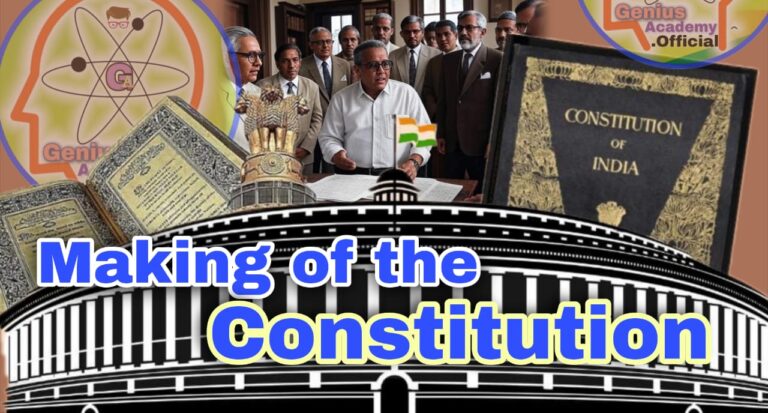Comprehensive Analysis: Bilateral Investment Treaty (BIT) 2024 Between India and UAE
The Bilateral Investment Treaty (BIT) 2024 between India and the UAE marks a significant milestone in strengthening economic relations between the two nations. It replaces the previous Bilateral Investment Promotion and Protection Agreement (BIPPA), enhancing the framework for investment cooperation and addressing challenges in trade and investment. This essay examines the historical ties, economic significance, challenges, and prospects for the Bilateral Investment Treaty (BIT) 2024, offering a detailed exploration of the bilateral relations between India and the UAE.
India-UAE Economic Relations: An Overview
The UAE is one of India’s most critical economic partners in the Middle East. It accounts for 3% of India’s total Foreign Direct Investment (FDI) inflows, contributing nearly $19 billion between 2000 and 2024. The Bilateral Investment Treaty (BIT) 2024 is expected to strengthen this trajectory, particularly underpinned by the Comprehensive Economic Partnership Agreement (CEPA) signed in 2022.
Historical Milestones in India-UAE Relations
- Strategic Partnership Declaration (2015)
During Prime Minister Narendra Modi’s visit to the UAE in 2015, the two nations elevated their relationship to a strategic partnership. This move laid the foundation for collaboration in various sectors, including trade, defense, and energy. - Cultural Engagement (2019)
India’s participation as the Guest of Honour at the Abu Dhabi International Book Fair highlighted the nations’ strong cultural and literary ties. This engagement underscored the soft power dimensions of their bilateral relationship. - COVID-19 Solidarity (2020-2021)
The UAE extended support to India during the COVID-19 pandemic by providing critical medical supplies and vaccines, showcasing solidarity during times of global crisis. - Comprehensive Economic Partnership Agreement (2022)
CEPA aimed to enhance bilateral trade to over $100 billion annually within five years. It focused on reducing tariffs, increasing market access, and fostering cooperation in sectors such as technology, pharmaceuticals, and logistics.
Bilateral Investment Treaty (BIT) 2024
Key Features
The BIT 2024 aligns with India’s modernized approach to investment treaties, focusing on protecting investor rights while safeguarding sovereign regulatory powers. Unlike the previous BIPPA, the Bilateral Investment Treaty (BIT) incorporates detailed provisions on:
- Investor-State Dispute Settlement (ISDS) mechanisms, ensuring fair resolution of disputes.
- Sustainability and Corporate Responsibility, reflecting global priorities like renewable energy and sustainable business practices.
Objectives
- Enhance FDI inflows from the UAE by offering a secure investment climate.
- Strengthen bilateral trade by reducing bureaucratic hurdles and fostering investor confidence.
- Align with India’s broader economic goals, such as achieving a $5 trillion economy by 2025.
Challenges in India-UAE Relations
Despite the promising BIT and CEPA frameworks, several challenges persist in the bilateral relationship, including economic, geopolitical, and labor-related issues.
1. Non-Tariff Barriers (NTBs)
India faces hurdles due to the UAE’s stringent Sanitary and Phytosanitary (SPS) measures and Technical Barriers to Trade (TBT). These regulations particularly affect exports in:
- Poultry and meat products.
- Processed foods.
2. Competition from China
China’s increasing economic footprint in the UAE, bolstered by low-interest loans and aggressive investments, creates significant challenges for Indian businesses. This has led to reduced opportunities for Indian firms in sectors like construction and energy.
3. Middle Eastern Geopolitics
The UAE’s normalization of ties with Israel under the Abraham Accords and ongoing conflicts like the Israel-Palestine issue complicate India’s regional projects, such as the India-Middle East-Europe Corridor (IMEC). Additionally, balancing ties with *Iran, a critical partner in India’s Chabahar Port project, and the UAE requires nuanced diplomacy.
4. Labor Rights and the Kafala System
The Kafala system in the UAE, which governs migrant labor, has been criticized for undermining the rights of Indian blue-collar workers. The system grants excessive control to employers, often resulting in:
- Restricted mobility.
- Exploitation of workers.
- Lack of access to grievance mechanisms.
5. UAE’s Financial Support to Pakistan
The UAE’s financial aid to Pakistan, a country associated with cross-border terrorism against India, raises national security concerns. This aspect complicates India’s diplomatic balancing act in the region.
6. Contract Enforcement Issues
India’s low ranking in contract enforcement under the World Bank’s Ease of Doing Business framework discourages UAE investors. Despite improved BIT provisions, structural inefficiencies in India’s judicial and regulatory systems remain a bottleneck.
Opportunities and the Way Forward
1. Strategic Dialogue Platforms
To address bilateral and regional challenges, India can establish strategic dialogue mechanisms, similar to the 2+2 dialogues held with the United States and Russia. These platforms can:
- Foster mutual understanding on security and economic concerns.
- Address geopolitical tensions, such as the UAE’s relations with Pakistan and Israel.
2. Alignment with UAE’s Vision 2021
India can leverage the UAE’s efforts to diversify its economy away from oil by:
- Investing in renewable energy projects.
- Promoting Indian startups in fintech, edtech, and healthcare sectors.
- Expanding cooperation in artificial intelligence (AI) and robotics.
3. Strengthening Defense Cooperation
India and the UAE can enhance defense ties by drawing inspiration from agreements like the COMCASA (Communications Compatibility and Security Agreement) signed with the United States. Key areas of focus include:
- Joint military exercises.
- Technology sharing in cybersecurity and aerospace.
- Collaborative research in defense manufacturing.
4. Promoting Cultural Diplomacy
Building on India’s strong cultural ties with the UAE, initiatives such as:
- Organizing film festivals and literary events.
- Promoting Indian classical music and dance in the UAE.
- Encouraging student exchange programs.
5. Reforming Labor Policies
To address the challenges faced by Indian workers, India can negotiate better labor agreements with the UAE, focusing on:
- Abolishing the Kafala system.
- Providing legal assistance to vulnerable workers.
- Facilitating skill development programs to align Indian labor with UAE market needs.
6. Enhancing Contract Enforcement
India must improve its judicial processes to ensure faster resolution of commercial disputes. Reforms can include:
- Digitization of court procedures.
- Establishment of commercial courts in major cities.
- Adoption of global best practices for dispute resolution.
Conclusion
The Bilateral Investment Treaty (BIT) 2024 between India and the UAE reflects a commitment to fostering economic cooperation, investment security, and sustainable development. While the treaty addresses several past challenges, unresolved issues such as labor rights, geopolitical tensions, and non-tariff barriers require sustained efforts from both nations.
By leveraging opportunities in renewable energy, technology, and cultural diplomacy, and by addressing the challenges of regional politics and contract enforcement, India and the UAE can deepen their partnership. The Bilateral Investment Treaty (BIT) 2024 serves as a cornerstone for realizing this vision, ensuring mutual growth and stability in an increasingly interconnected world.
Source:- PIB
Daily Mains Practice Questions
UPSC (CSE) Mains Questions on Bilateral Investment Treaty 2024.
General Studies Paper II: Polity and International Relations
| [Q1.] Analyze the significance of the Bilateral Investment Treaty (BIT) 2024 between India and the UAE in promoting foreign investment. How does it address the challenges of its predecessor, the BIPPA?(250 words) |
| [Q2.] Discuss the impact of non-tariff barriers and technical regulations on India-UAE trade relations. Suggest measures to address these barriers in light of CEPA and Bilateral Investment Treaty (BIT) 2024. (250 words) |
| [Q3.] Evaluate the role of India-UAE Comprehensive Economic Partnership Agreement (CEPA) in achieving India’s goal of becoming a $5 trillion economy. (250 words) |
| [Q4.] How does geopolitical instability in the Middle East, such as the Abraham Accords and regional conflicts, influence India-UAE bilateral cooperation? Suggest ways to mitigate these challenges. (250 words) |
| [Q5.] Examine the implications of the Kafala system on Indian migrant workers in the UAE. Discuss policy measures India could adopt to safeguard their rights. (250 words) |
General Studies Paper III: Economy
| [Q6.] “China’s growing economic influence in the UAE presents challenges for Indian businesses.” Critically analyze this statement in the context of India’s trade and investment strategy. (250 words) |
| [Q7.] With reference to Bilateral Investment Treaty (BIT) 2024, discuss how improved investor-state dispute settlement mechanisms can enhance FDI inflows into India. (250 words) |
| [Q8.] India ranks low in contract enforcement globally. Discuss its implications on attracting UAE-based FDI and propose reforms to address this issue. (250 words) |
Ethics, Integrity, and Aptitude
| [Q9.] “India’s engagement with the UAE reflects a balance of economic pragmatism and ethical considerations in labor rights.” Discuss this statement with examples. (250 words) |
Frequently Asked Questions (FAQs)
1. What is the Bilateral Investment Treaty (BIT) 2024 between India and the UAE?
Answer:—
The Bilateral Investment Treaty (BIT) 2024 is an agreement that provides a framework for promoting and protecting investments between India and the UAE. It replaces the earlier Bilateral Investment Promotion and Protection Agreement (BIPPA) to address modern investment challenges and ensure investor rights while safeguarding sovereign regulatory powers.
2. How does the Bilateral Investment Treaty (BIT) 2024 differ from BIPPA?
Answer:—
The Bilateral Investment Treaty (BIT) 2024 focuses on more detailed provisions, including:
- Investor-State Dispute Settlement (ISDS) mechanisms to resolve conflicts transparently.
- Enhanced emphasis on sustainability and corporate social responsibility, reflecting global priorities.
- Unlike BIPPA, it addresses ambiguities in investment protection and regulatory jurisdiction
3. How significant is UAE’s investment in India?
Answer:—
The UAE accounts for 3% of India’s total FDI inflows, contributing $19 billion between 2000 and 2024. This includes investments across infrastructure, energy, technology, and other key sectors.:
The UAE accounts for 3% of India’s total FDI inflows, contributing $19 billion between 2000 and 2024. This includes investments across infrastructure, energy, technology, and other key sectors.
4. What are the major challenges in India-UAE economic relations?
Answer:—
Key challenges include:
- Non-tariff barriers (NTBs) like sanitary and phytosanitary (SPS) measures.
- Increasing Chinese economic influence in the UAE.
- Labor issues under the Kafala system.
- Geopolitical instability in the Middle East.
5. What is the Comprehensive Economic Partnership Agreement (CEPA)?
Answer:—
CEPA, signed in 2022, is a trade pact between India and the UAE to:
- Increase bilateral trade to over $100 billion annually by reducing tariffs and expanding market access.
- Enhance cooperation in areas like technology, logistics, and pharmaceuticals.
6. How does the Kafala system affect Indian workers in the UAE?
Answer:—
The Kafala system grants employers excessive control over migrant workers, leading to issues like restricted mobility, labor exploitation, and inadequate grievance mechanisms. Many Indian blue-collar workers in the UAE face these challenges.
7. What is India’s strategy to address labor issues in the UAE?
Answer:—
India is negotiating labor agreements to:
- Abolish the Kafala system.
- Ensure legal protections and dispute resolution for workers.
- Promote skill development for better job opportunities in the UAE.
8. How does China’s economic influence in the UAE affect India?
Answer:—
China’s provision of low-interest loans and aggressive investments in infrastructure and technology sectors has reduced market opportunities for Indian businesses in the UAE. This underscores the need for India to deepen its economic engagement.
9. How can India enhance its contract enforcement to attract UAE investors?
Answer:—
India can:
- Digitize court processes to expedite case resolution.
- Establish commercial courts to handle investment-related disputes efficiently.
- Adopt global best practices in arbitration and mediation.
10. What is the significance of cultural diplomacy in India-UAE relations?
Answer:—
Cultural diplomacy, such as India’s participation as the Guest of Honour at the Abu Dhabi International Book Fair, strengthens people-to-people ties, which complement economic and strategic cooperation.
Prelims Questions on Bilateral Investment Treaty (BIT)
(1.) What treaty replaced the Bilateral Investment Promotion and Protection Agreement (BIPPA) between India and the UAE in 2024?
Correct Answer!
Incorrect Answer!
(2.) How much has the UAE invested in India between 2000 and 2024?
Correct Answer!
Incorrect Answer!
(3.) When did India and the UAE declare a strategic partnership to enhance cooperation across sectors?
Correct Answer!
Incorrect Answer!
(4.) Which agreement aimed to enhance bilateral trade and economic cooperation between India and the UAE in 2022?
Correct Answer!
Incorrect Answer!
(5.) What major regulatory barrier has hindered Indian exports to the UAE?
Correct Answer!
Incorrect Answer!
(6.) How has China’s economic influence affected India-UAE relations?
Correct Answer!
Incorrect Answer!
(7.) What is the Kafala system, and how does it affect Indian workers in the UAE?
Correct Answer!
Incorrect Answer!
(8.) What concern does UAE’s financial support to Pakistan raise for India?
Correct Answer!
Incorrect Answer!
(9.) Which Indian limitation might deter UAE investors despite the improved terms in the Bilateral Investment Treaty (BIT)
Correct Answer!
Incorrect Answer!
(10.) What initiative could strengthen India-UAE strategic cooperation across multiple sectors?
Correct Answer!
Incorrect Answer!
(11.) What was the key objective of replacing BIPPA with the Bilateral Investment Treaty (BIT) 2024
Correct Answer!
Incorrect Answer!
(12.) Which historic event marked the beginning of India and UAE’s strategic partnership?
Correct Answer!
Incorrect Answer!
(13.) How much of India’s total Foreign Direct Investment (FDI) receipts does the UAE contribute?
Correct Answer!
Incorrect Answer!
(14.) Which agreement focuses on enhancing bilateral trade and economic cooperation between India and the UAE?
Correct Answer!
Incorrect Answer!
(15.) What is a significant challenge faced by India in its economic relations with the UAE?
Correct Answer!
Incorrect Answer!
(16.) How does the Kafala system impact Indian workers in the UAE?
Correct Answer!
Incorrect Answer!
(17.) Which Middle Eastern agreement involving the UAE has raised concerns for India’s regional projects like IMEC?
Correct Answer!
Incorrect Answer!
(18.) Which sector offers an opportunity for enhanced India-UAE collaboration under UAE’s Vision 2021?
Correct Answer!
Incorrect Answer!
(19.) How did UAE support India during the COVID-19 pandemic?
Correct Answer!
Incorrect Answer!
(20.) Which initiative can India adopt to enhance bilateral defense and economic cooperation with the UAE?
Correct Answer!
Incorrect Answer!





